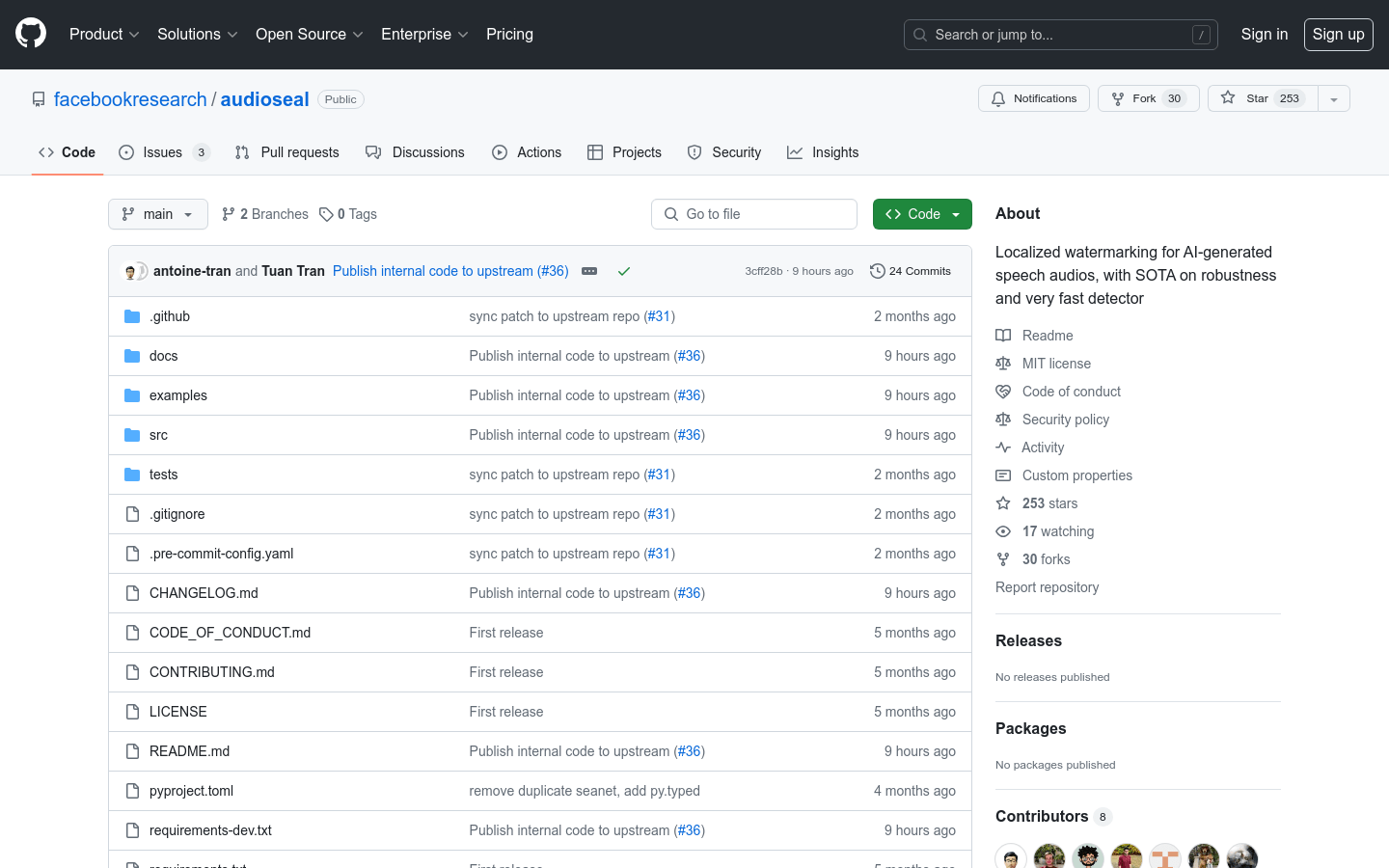

Audioseal
Overview :
AudioSeal is a localized watermarking technology for AI-generated audio, boasting state-of-the-art robustness and exceptionally fast detection speeds. It utilizes a joint training approach of a watermark embedding generator and a detector, allowing it to detect watermark segments even within edited audio, across extended audio lengths. AudioSeal incorporates a fast, single-pass detector, offering detection speeds two orders of magnitude faster than existing models, making it ideal for large-scale and real-time applications.
Target Users :
AudioSeal is designed for developers and enterprises who need to protect and verify the copyright of AI-generated audio content. It is particularly suitable for real-time monitoring and management of large-scale audio content, such as in the music industry, podcasts, audiobooks, and more.
Use Cases
Music industry utilizes AudioSeal to protect original works, preventing unauthorized copying and distribution.
Podcast creators leverage AudioSeal to ensure the integrity and authenticity of their content.
Audiobook platforms employ AudioSeal technology to secure copyright and track the origin of audio content.
Features
Generator: Inputs an audio signal and outputs a watermark of the same size, which can be added to the input for watermarking.
Detector: Inputs an audio signal and outputs the probability of each sample containing a watermark.
Supports encoding of 16-bit secret messages, optionally embedded within the watermark.
The detector can output the secret message encoded within the watermark.
Offers fast detection suitable for large-scale and real-time applications.
Provides training code, allowing users to build their own watermark models.
How to Use
1. Install the required Python environment and dependencies.
2. Clone the AudioSeal repository from GitHub or install via PyPI.
3. Load the AudioSeal generator and detector models.
4. Utilize the generator to watermark an audio signal.
5. Employ the detector to analyze the watermarked audio and obtain the probability of watermark presence.
6. Decode the secret message from the detector output if necessary.
7. Train your own watermark model or utilize the provided models as required.
Featured AI Tools

Audioseal
AudioSeal is a localized watermarking technology for AI-generated audio, boasting state-of-the-art robustness and exceptionally fast detection speeds. It utilizes a joint training approach of a watermark embedding generator and a detector, allowing it to detect watermark segments even within edited audio, across extended audio lengths. AudioSeal incorporates a fast, single-pass detector, offering detection speeds two orders of magnitude faster than existing models, making it ideal for large-scale and real-time applications.
AI audio enhancer
58.8K

Genau
GenAU is an audio generation model developed by Snap Research. It leverages the AutoCap automatic captioning model and the GenAu audio generation architecture to significantly enhance audio quality. It excels in generating environmental sounds and effects, particularly in scenarios with limited data and subpar caption quality. The GenAU model is capable of producing high-quality audio and holds immense potential in the field of audio synthesis.
AI audio enhancer
51.6K